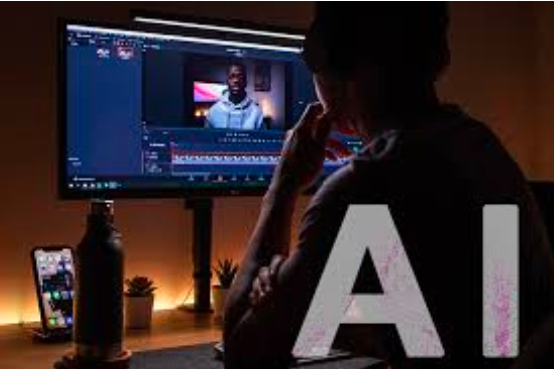Introduction
As of 2025, AI has reached a point where transforming a single best image to video of 2025 isn’t just possible, it’s practical, fast, and incredibly lifelike. From indie creators to brand entrepreneurs, photo to video AI Image Editor how we produce brief-shape video content material, ads, and social media campaigns.
After testing more than 15 systems over two weeks, I narrowed the list down to the 7 high-quality picture-to-video AI equipment really worth your attention. Each platform offers a unique stability of quality, customization, and fee efficiency. Whether you’re building cinematic animations from stills, prototyping video advertisements, or generating hyperrealistic clips for innovative projects, at least this sort of equipment will fit your needs.
Top Tools at a Glance
| Tool | Best For | Key Features | Free Plan | Starting Price |
| Magic Hour | Best overall image-to-video creator | Prompt-free editing, lip sync, face swap, HD export | ✅ Yes | $9/month |
| Pika Labs | Artistic motion generation | Creative animation styles, Discord workflow | ✅ Yes | Free beta |
| Runway ML | Professional video production | Gen-2 model, advanced editing tools | ✅ Yes | $12/month |
| D-ID | Fast talking photo to video | Quick generation, realistic facial movement | ✅ Yes | $5/month |
Magic Hour : Best Overall for AI Image Editing
If I had to pick one all-around solution for 2025, it’s Magic Hour. It combines the power of AI talking photo creation with seamless ai image editor capabilities.
With just an image upload, you can generate stunning talking videos using lip sync AI and image to video AI technology. What’s most impressive is that Magic Hour’s ai image editor with prompt free approach eliminates the need for complex text prompts – everything happens visually, in seconds.
Pros:
- Natural speech and facial movement
- Built-in face swap and HD video export
- Fast, web-based interface
Cons:
- Lacks desktop app
- Advanced features still rolling out
If you create marketing content, tutorials, or social media videos, this platform saves hours of manual editing.
Runway ML
Runway ML remains a top contender for creators who value versatility. It allows users to turn images into animated scenes using AI-driven motion brushes and camera tools.
Pros
- Simple interface for visual experimentation
- Great for hybrid workflows (video + motion graphics)
- Regular updates and new AI models
Cons
- Output quality can vary
- Cloud rendering can be slow during high traffic
Evaluation
I’ve used Runway ML for several short ad prototypes. It’s a flexible choice for creators snug with AI experimentation, even though it occasionally trades realism for velocity.
Pricing: Free plan with watermark; top class begins at $15/month
Pika Labs
Pika Labs is known for its ease of use and rapid rendering. You can input an image or short text prompt, and it will generate smooth animated sequences within minutes.
Pros
- Super fast rendering
- Great for concept videos or motion previews
- Intuitive browser-based UI
Cons
- Limited editing depth
- Can over-stylize motion effects
Evaluation
Pika Labs is ideal for creators who prioritize speed. For quick storyboarding or pitching ideas, it’s one of the most green systems in the marketplace.
Pricing: Free model available; paid plans begin at $10/month
Kaiber
Kaiber combines artistic control with accessible design. You can upload an image, select a style, and adjust camera motion and animation depth.
Pros
- Excellent stylistic control
- Offers music integration for motion syncing
- Community-driven templates
Cons
- Renders can appear too stylized for corporate use
- Requires some trial and error for realism
Evaluation
Kaiber is perfect for creators and musicians who want to visualize album covers, concept art, or storytelling clips. It’s not built for ultra-realistic results, but its style-focused engine gives unique, creative output.
Pricing: Free plan with watermark; paid plans start at $12/month
Final Takeaway
Each of these image to video AI tools offers something different:
- Magic Hour – best for realistic, production-quality video
- Runway ML – best for creative experimentation
- Kaiber – best for artistic visualizations
- Pika Labs – best for speed and concepting
- HeyGen – best for personalized marketing content
- Synthesia – best for corporate explainers
- Colossyan – best for educational and training use
My advice? Experiment with or 3 tools earlier than committing. The right match relies upon your workflow – and what kind of creative manipulation you want.
How We Chose These Tools
To identify the best image to video AI tools of 2025, I focused on practical performance and creator needs. Here’s the breakdown of my evaluation process:
- Output Quality
- Creative Control
- Speed and Efficiency
- Ease of Use
- Pricing and Value
- Integration with Other Tools
FAQs
- What is an image to video AI tool?
It’s software that transforms static images into animated, cinematic video clips using AI. - Which tool is the best in 2025?
Magic Hour’s image to video tool ranks highest for realism, simplicity, and prompt-free editing. - Can I use these tools without editing skills?
Yes. Most platforms are beginner-friendly and require no technical knowledge. - Are image to video AI tools free?
Some, like Magic Hour and Pika Labs, offer free plans with basic features and paid upgrades for pro use.







